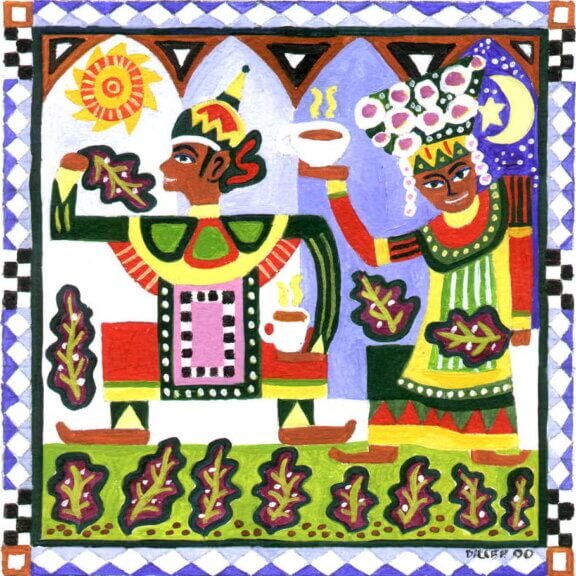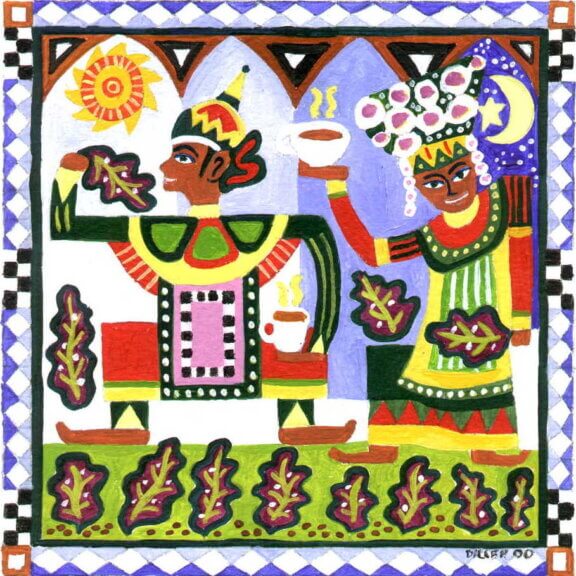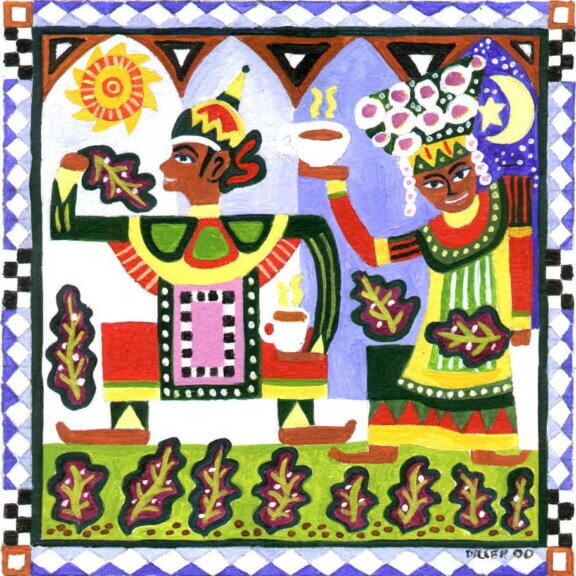
Coffee from Indonesia and the South Seas Region is almost always processed using the Wet Hull methods, or giling basah. Far less common, globally speaking, than the washed or natural processes, giling basah provides the resulting coffee beans with a unique herbal and earthy flavor unlike anything else.
Due to the extremely wet, humid climate in Indonesia, it’s difficult to dry coffee consistently for long amounts of time. As we know, both the washed and natural processing methods require long drying times, whether in direct sunlight or in commercial dryers. The Wet-Hull method includes a few seemingly “extra” steps, which ensure the green coffee beans are prepared and ready for export as quickly as possible. The wet-hull method is the fastest coffee processing method- most coffee goes from harvest to export in around one month! This giling basah processing provides a rich, earthy, sometimes herbal flavor that is distinctive and a joy to drink. Sumatran coffee has been made famous by big name coffee franchises, so the characteristic flavor notes may be familiar to some coffee lovers. The flavor profile of coffees processed using this method is lower in acidity or sourness, and high in a sort of “dryness” (think of a really dry red wine that almost catches in your throat for comparison.) At the bottom of this article, we will provide links to some of our freshly roasted single origin coffee processed using the wet-hull method, so you can order online and try some at home!
The coffee bean we know and love starts life encased in a small fruit called a coffee cherry. These cherries grow on coffee trees in hot, humid environments. In Indonesia, they are harvested by farmers, who begin the processing method as soon as they can after the cherries are picked.
After harvesting, the coffee cherries are put through a hand-cranked de-pulper. The de-pulper removes, not the pulpy fruit (as the name would suggest) but the skin from the coffee cherries. Once the skin is removed, the coffee cherries are set to ferment overnight. This fermentation serves to break down the fruit layer beneath the skin (the mucilage). In the morning, the mucilage is washed away. All that remains to protect the soft, delicate coffee seed is the thin parchment layer.
Wet-hulled coffees are now dried for only a few hours. In contrast, washed coffees would dry to approximately 10% moisture content over a period of several weeks at this stage. The moisture content in wet-hulled (giling basah) coffee is closer to 50% after a few hours of drying, and the beans are still swollen in appearance.
The coffee farmer will then sell the partially processed coffee at local market to a middleman. Coffee farmers from other regions in the world, who use the washed process, can take close to 3 months to prepare, bag, and sell their coffee, but this timeframe is shortened to only a few weeks with wet-hulled coffee. It’s the responsibility of the middleman to sell the coffee to a mill, or a collector. At this stage, the coffee is dried at the mill to 25 or 35% moisture content.
After the coffee has reached 25-35% moisture content, the mill will send the (still somewhat moist) beans through a wet-huller. The friction of the wet-huller removes the parchment layer. Other coffees are usually dried to a much lower moisture content before the parchment hull is removed. The parchment layer protects the beans from outside impurities or changes in temperature that could influence the quality and flavor. In this method, however, the parchment is removed early to facilitate faster drying.
After the coffee is hulled, it is air-dried to 12% moisture. The vulnerability of the unprotected coffee bean at this stage can lead to a more interesting flavor profile. The potential for inconsistencies can mean that different batches have stronger earthy notes versus stronger herbal flavors. As long as the coffee beans are of the highest quality (for example, we only purchase premium quality green coffee beans to roast here in Kingfield at Carrabassett Coffee Company), the slight inconsistencies inherent in the wet-hulled method will always lead to a rich and robust cup of coffee. Once the green coffee beans reach the correct moisture level, usually only a month after the coffee was picked, it’s ready for export.


